Humming Blog |
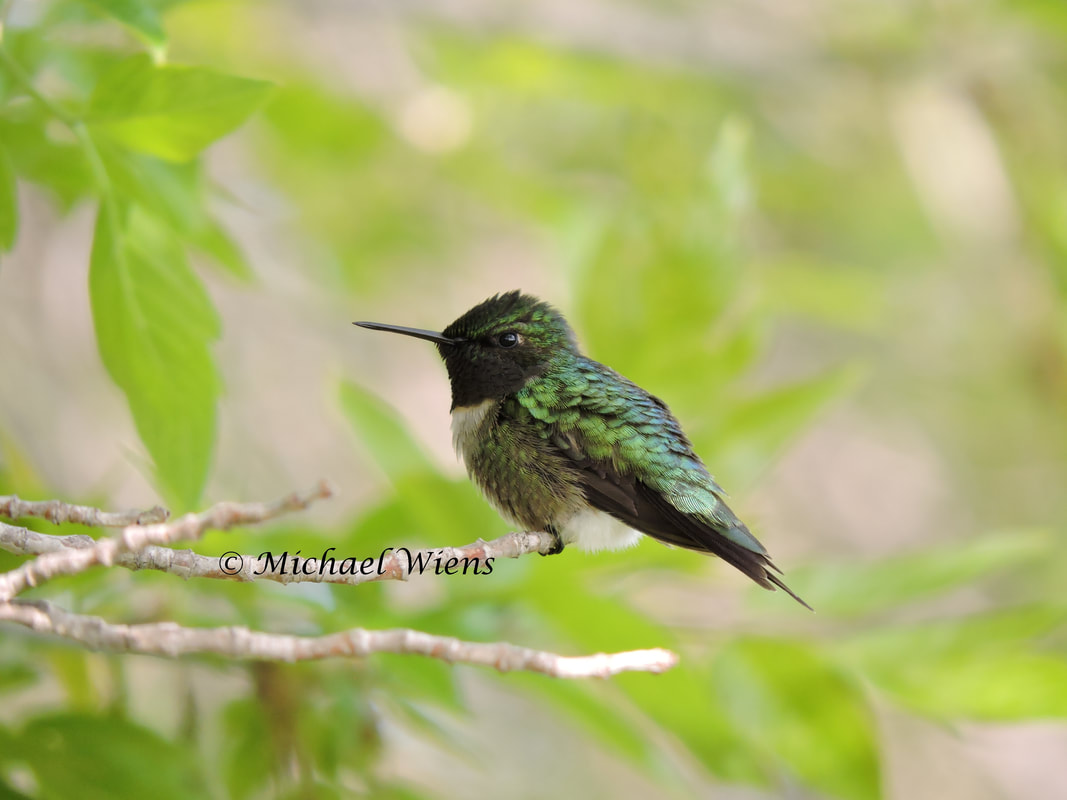 I captured this imaged earlier in Spring, but had little to say about it. Ziggy perched on this same branch repeatedly and gave me multiple opportunities for pictures. He was about 6 feet away and would periodically look at me and then around the yard as he watched for females or intruding males. He sat perfect. Coloring was perfect. Every fiber of every perfect feather just glistened. There were no flaws in any part of this little bird. What more could I say about him. He was Just Perfect! This is one image you have to click on to enlarge to see greater detail. May 2017, N.E. of Edmonton, Alberta, Canada. Adult male Ruby-throat hummingbird.
0 Comments
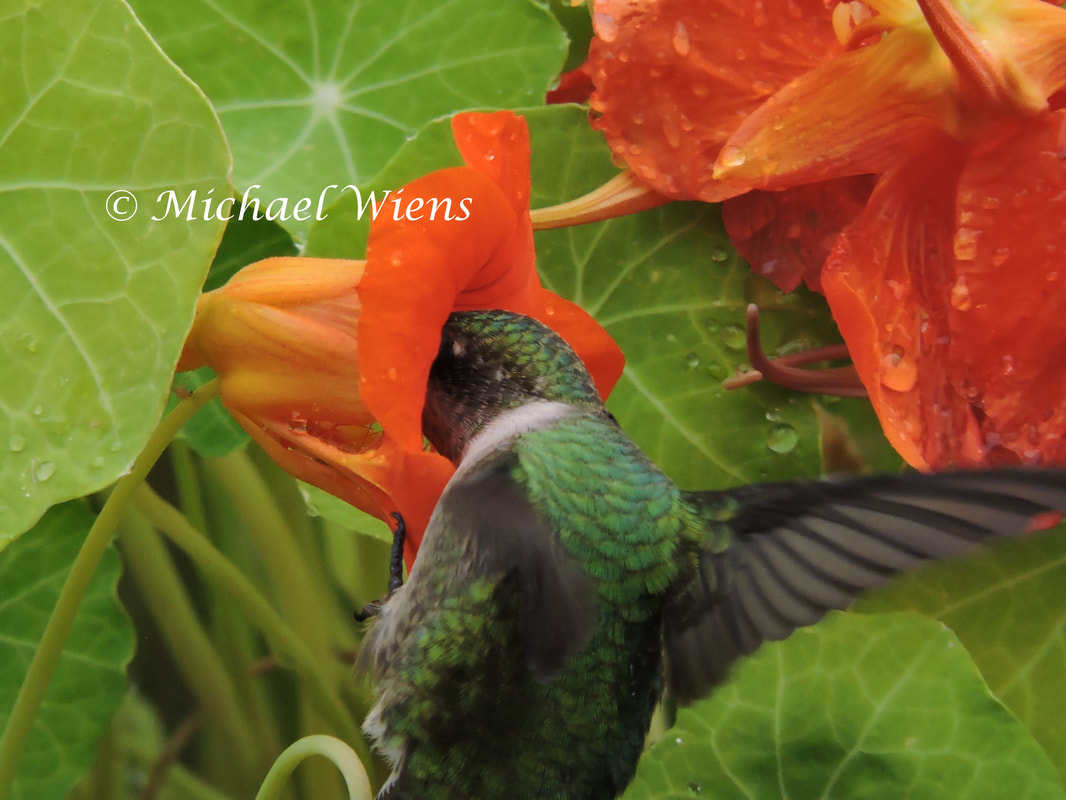 It has the most controlling effect on them. It's what they think about from morning til night. They will seek it out no matter how difficult the circumstances, and they will fight for it with their life. The only thing it can't control is when they migrate. Have you ever wondered why hummingbirds feed from flowers? It's the same with insects. Flowers were given the sweetest tasting nectar while hummingbirds were given the most overwhelming and overpowering desire for it. If their desire fell short of that need for flowers, the system of pollination would simply fall apart. We can eat something repeatedly for a few days and never want to touch it again, but through the lifetime of a hummingbird the desire for nectar just gets stronger. Every minute of every day is consumed with flowers and feeders. That little brain is wired and capable of remembering every flower and food source over the years. The proof of this is when hummingbirds show up to a location that held a feeder several months ago. How that tiny little brain is capable of remembering thousands of coordinates is simply beyond imagination. Their survival depends greatly on memory and obedience and that's exactly how nature was built. It does what it's supposed to do, when it's supposed to do it and for the reasons demanded of it. Without this kind of obedience the animal kingdom would crumble. Here is a young male Ruby-throated hummingbird feeding from a Vining Nasturtium flower. N.E. of Edmonton, Alberta, Canada. August 2017 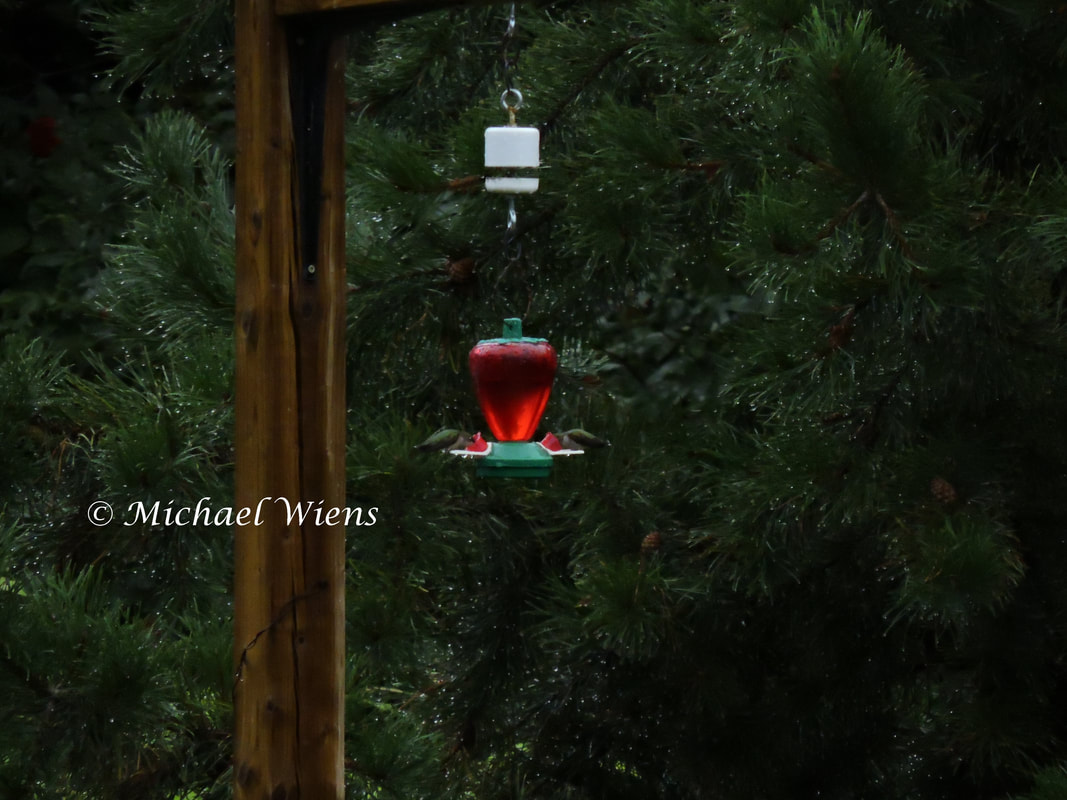 It rained constantly from first light until evening. The rain was heavy enough through the day to even put a damper on the hummingbirds' spirits. Everything was soggy and drenched. Even the hummingbirds had little desire to chase each other. They still continued their regular feeding throughout the day but without the anger. It got to a point where the rain slowly let up and left every leaf and pine needle hanging with a drop of daylight. It's hard to forget those moments that tweak our senses. The country air was brought back to life with renewed freshness, and breaks in the clouds started to appear. Plants were drinking as much water as possible and the sun began to rest, and I just couldn't wait to see the beauty of the morning sunrise. This was a simple capture, but I loved how the pine needles sparkled with raindrops. These two young Rubies sat content on the feeder as they both had little desire to do anything but feed. Ruby-throated hummingbirds. August 2017. N.E. of Edmonton, Alberta, Canada. 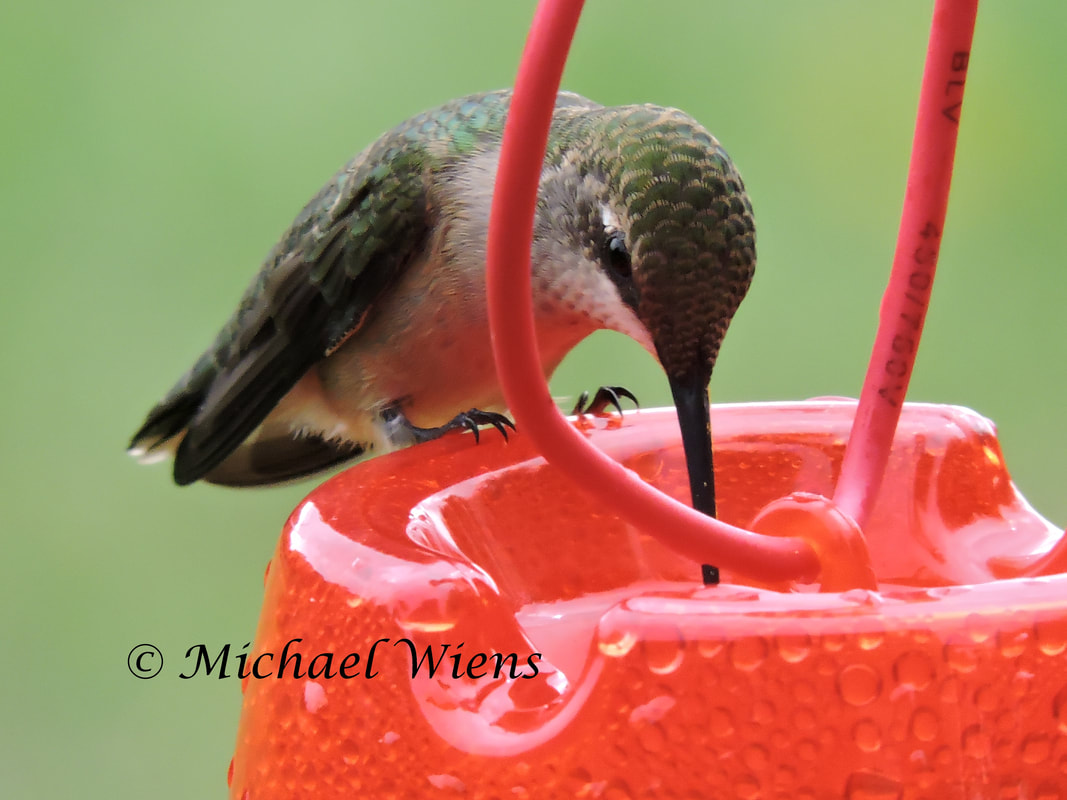 It wasn't exactly what I was thinking when I thought up a training feeder, but I suppose you could say it worked for this young one. This young male Ruby-throat was impressed with the flowers and the nectar, but it didn't stop there. It sat awkwardly on the wire, on the miniature shepherd's hook that held the feeder and on the feeder itself. This is always a sure way to identify a juvenile. They will sit on anything and everything. They are simply impressed with life and everything they see. It can often times get them in trouble, but they do learn about life quickly, literally. They poke, taste, and lick everything they see. That is one good reason why bug sprays, grease, or vaseline are NOT a good idea around or on the feeder to keep pests away. They use their tongue to sample everything. Any poisons they lick or ingest can't be undone. It could make them sick or worse. Please remember this when hanging feeders. The adult birds are usually not this curious, but the young will look for trouble just like any young animal or bird. I recently posted a video about hummingbirds, and one young Ruby flew up to an artificial cat to lick it's eye. If it were a real cat, it would have met its demise. You may think it wouldn't happen to a real cat, but I can tell you with absolute certainty that it would. Literally everything they see draws interest, whether it moves or not, whether it's colorful or not, and whether it's dangerous or not. So please be mindful if you are trying to attract hummingbirds. Many dangers we can't control, but there are many we can. Juvenile Male Ruby-throated hummingbird. N.E. of Edmonton, Alberta, Canada. August 2017 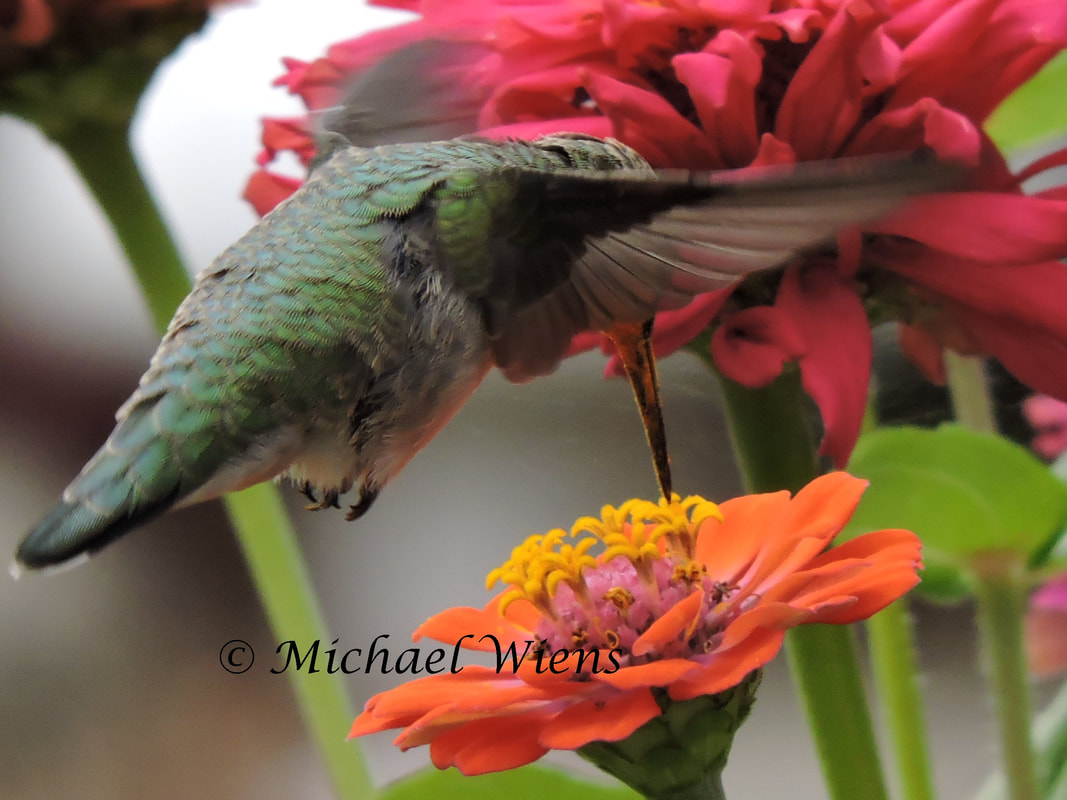 My hummingbird season is now three weeks over and I can't wait for next Spring. We even had our first frost a couple days ago and I don't like it one bit. Other than planning a few new projects for our garden next Spring, all I can do now is sit back and wait, and perhaps write a few blog posts to fill my appetite. I would love to hear how others did this year and I will let you know now how my season began and finished. It started off a bit slower. The Males showed up on time, but the females were very sporadic early on. We did end up getting about the same number of females, if not the few more by the 20th of June. The Spring birds were just spread out more so than other years. Our first young showed up three days earlier than last year, but three days later than 2015. It appeared to me as though the migrant population was down even though we had about nine adult Males stick around to fatten up. Even they didn't show up at the same time. As some would leave others would show up. 2014 was an incredible year. 2015 the numbers dropped slightly. 2016 the numbers were even lower, however the peak time was spread out over a longer time(which could have resulted in higher numbers), and this year a few less. This has been a very common pattern throughout the decades. The numbers in all species fluctuate, but I really have no concerns about these numbers. After all, anytime you have over 50 hummingbirds flying in and out of your yard, it's a good year. I can say that the number of adult Males we've had over the last four years has been consistent. The number of females seem to be up a bit, with about 12 of them bringing their young to our garden. What seemed to be down this year was the migrant population. There are too many variables to draw any kind of conclusion as to why this may be. The peak of our southern migration is always August 8 - 10th. This year we peaked between August 12 and 14th(the latest I've seen). It may appear as though the migration was a little bit later, but our last bird left right on par with the past couple years. I know many people were thinking it was an early migration, but when I compared all numbers for my yard over the last several years, it was very consistent. We did have a few horrible days of wind storms and I thought it would affect our local population, but the outcome didn't reflect it. Perhaps the winds and storms were worse around me and that affected the migrant population, but again it's difficult to draw any kind of concrete conclusions. Over all, the year appeared to be much like the past, but with a slight decline in the population. Whether or not the drastic weather will affect all of our populations is yet to be seen. I know from past environmental disasters that birds have been given tools to read, avoid or weather the storms. Here is a young Ruby throated hummingbird that couldn't get enough of these training flowers. Zinnias are always a great attractor for young hummingbirds. N.E. of Edmonton, Alberta, Canada. August 2017 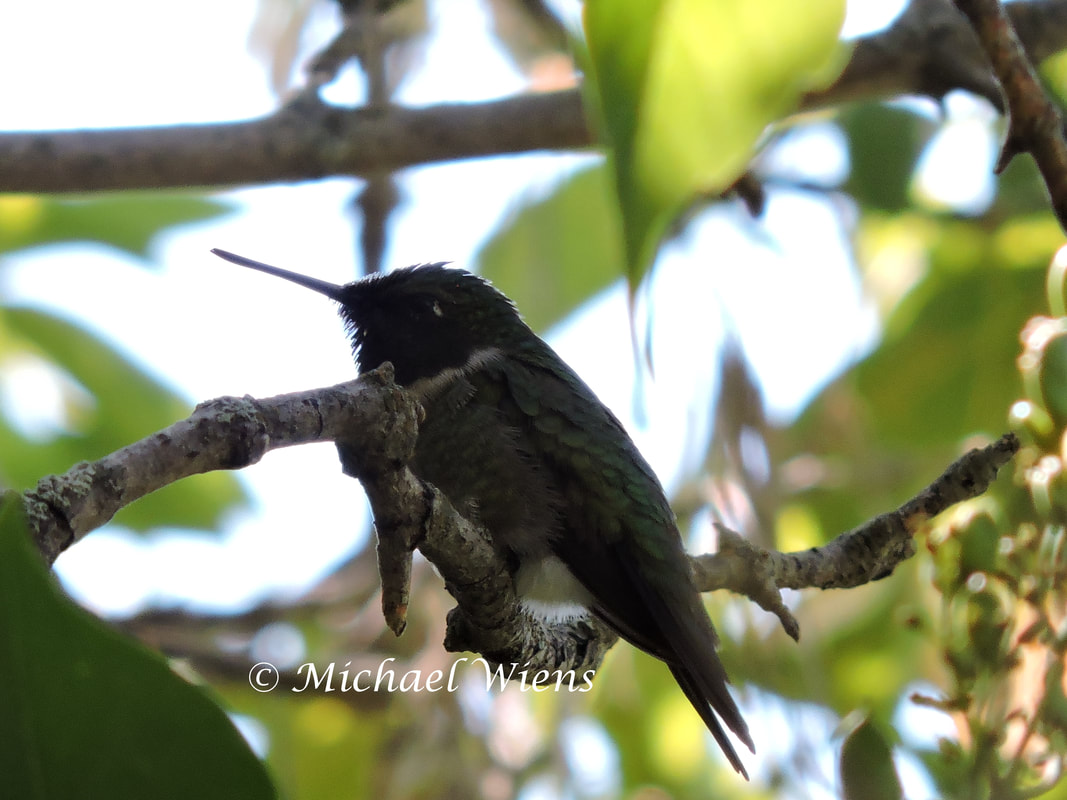 If someone asked you when your first hummingbird of the year was, would you remember? I know there are a number of people that would be able to rattle off the date in a second, but would you remember the first arrival over the last 10 years? Would you remember how many males stuck around your yard, or when the first young showed up in your yard each year? It may all seem like irrelevant information but there is so much value in tracking these annual statistics. How many males, when they first arrived, when the first young arrived, how many females showed up, when the males started to leave, and how many sightings per day or minute, are all valuable in understanding these birds and their population. What can we learn from this information? First of all don't compare your region to anyone else's. If you live in a city and get few sightings, don't think you're doing something wrong because someone 5 miles away from you living in the country has massive sightings. There are a lot of variables that dictate numbers, one being country folks should always have more sightings than those in the cities if they followed exactly the same practices. Just concentrate on increasing your own numbers. If you have just one male that shows up in Spring and sticks around for the remainder of the summer, you are doing things right. If you have one dominant male and several others trying to sneak in for nectar during the Spring mating, you are doing everything right. When the males show up in Spring, they are looking at all criteria in determining if this is an area that will attract females, if there's enough food, if there's a water source, if there are mature trees for shelter and protection and how many of each there are. How many adult males will also indicate how rich the population is. If there are not big numbers of males in your region, it means the female population is much lower. In this case the males will expand their region, sometimes several square miles in order to increase the breeding opportunities. You may see one male show up every few days or longer because his territory is so large. This is just a small amount of information you can obtain from tracking daily sightings throughout the entire time hummingbirds are here. I would encourage everyone to start a daily journal and track all the information you can. These are the important pieces of information that I track daily:
Again, you may think that some of this information is unnecessary but I can tell you that you'll start to determine consistencies and learn an incredible amount from it. You may want to track this information just for basic knowledge, but you also may expand on the information you collect to learn more about these birds than you ever thought possible. Each year before and during the hummingbird season you can look back and compare statistics, and trust me, you will be glad you kept track. **It may seem like an odd time to post about this, but it'll allow you to get a journal ready to start off next Spring when there are far too may other things to prepare. Photo is my last adult male Ruby-throated hummingbird of the year that left August 19th. 3 of the last 4 years the final adult male sighting was on this date. The other was August 15th. The latest male I've recorded is August 23rd. This one sat deep in the Lilac bush, using up as little energy as possible, and feeding every 15 minutes. N.E. of Edmonton, Alberta, Canada. 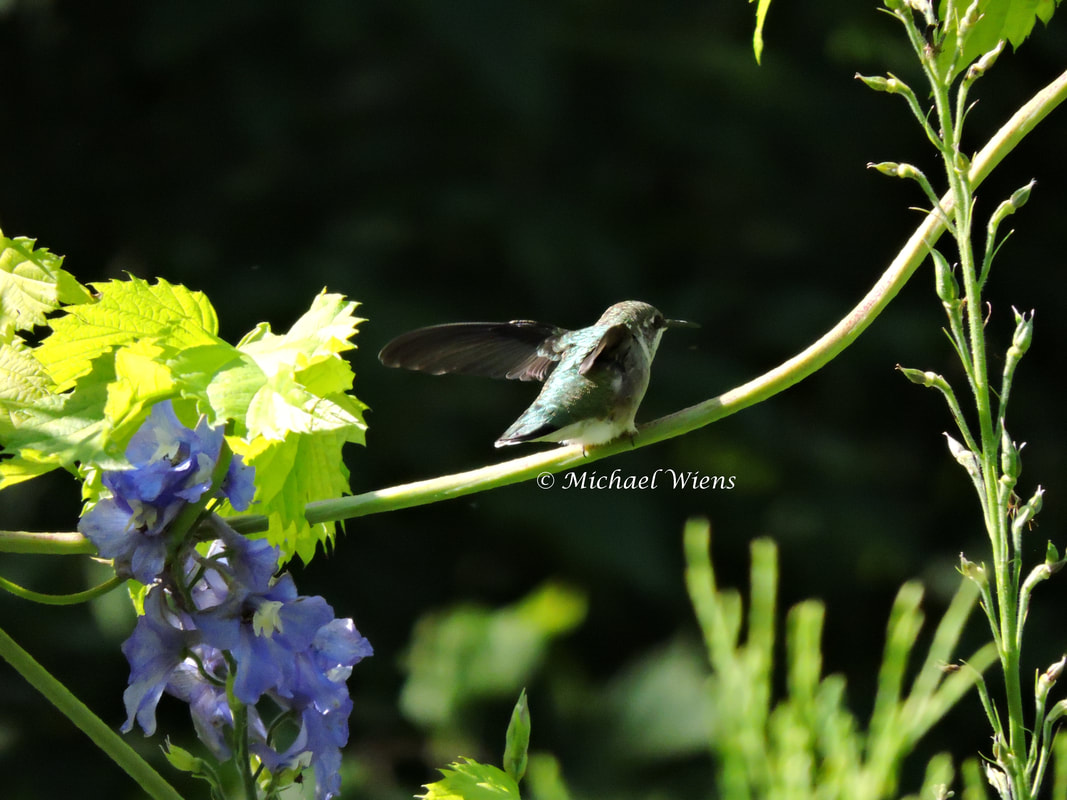 Hummingbirds are supreme flyers with the ability of flying just about any way, including straight up and hovering upside down, but when on their feet they are about as graceful as a penguin. They don't walk like most birds, but are capable of doing the sideways shuffle. Their wings are used nearly all the time including when they shuffle or move mere inches. There are many remarkable things to talk about when it comes to hummingbirds, but have you ever stopped to think about the countless number of wing beats they perform in a lifetime? As the crow flies, they travel well over 3000 miles in migration. But that doesn't compare to the back and forth flight in and around our yards for hours in every day. Now factor in that a hummingbird beats its wings at approximately 60 beats per second. I did some calculations, and that would mean the average hummingbird would flap its wings approximately ONE BILLION times within an average 6 year lifespan. Could you possibly imagine just how durable and powerful the muscles and tendons would have to be to perform this amazing feat. Miraculous! This young Ruby-throated hummingbird(Little Wallenda) is showing just how awkward it can be when trying to move on its feet. N.E. of Edmonton, Alberta, Canada. August 2017. 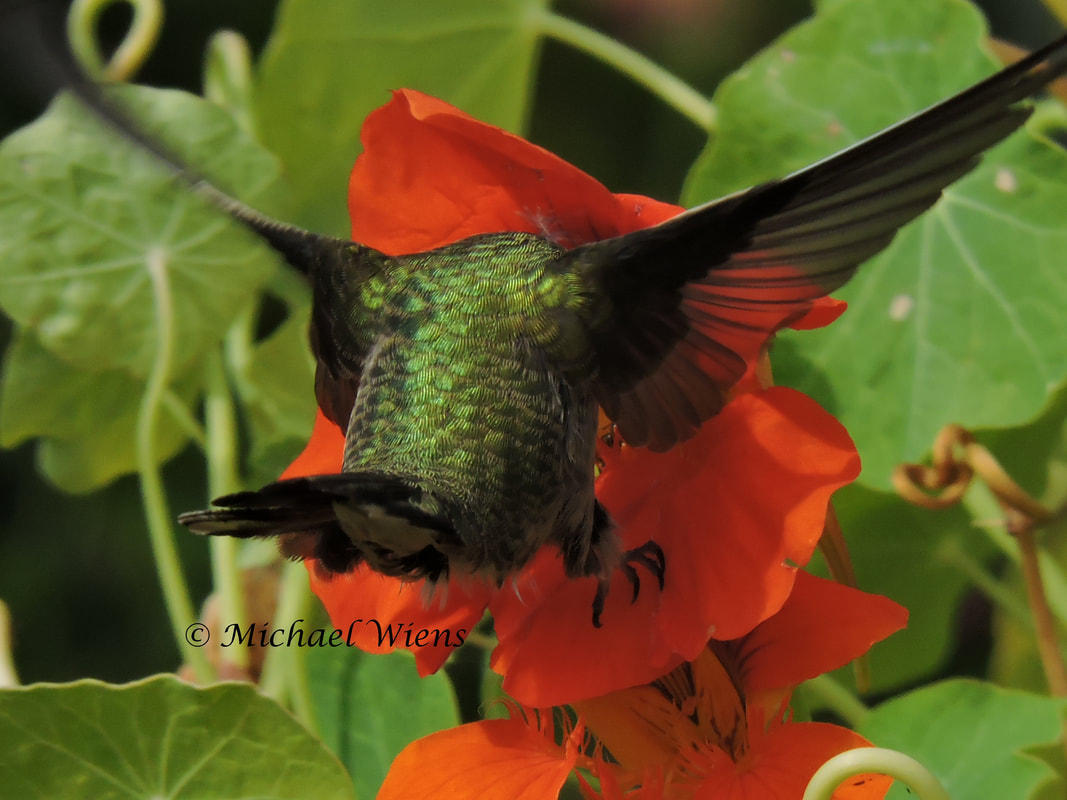 Hummingbirds can appear like the most dainty creatures in our yard. They hop from flower to flower and brighten up an already beautiful garden, but what we don't see is the anger that brews inside these little birds. They are born with issues that just intensify as they mature. They are greedy for their food and will do just about anything to defend it. While these tiny birds flit through the garden on swift wings, what we don't see are the weaponized little tools tucked deep within these little feathered pillows. Young birds use their feet and a lot for balance and getting themselves into big trouble in the flowers, but the young and mature alike will use their feet for fighting and defending their food at a moment's notice. When they get into battles with other hummingbirds that long pointed beak and razor talons can do some serious damage. They can grab a fistful of feathers and leave some lasting wounds. In the photo is a young Ruby Throated hummingbird trying to get every last drop of nectar in a Nasturtium flower while it uses the sharp talons to get a better grip. N.E. of Edmonton, Alberta, Canada. August 2017. 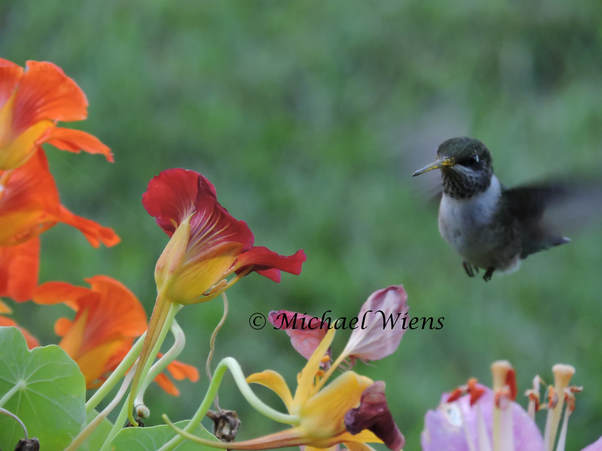 Millions of hummingbirds travel across the continent annually and can make it difficult for us to decipher one from the other within the same species. Adult males, of course, have the obvious ruby colored throat that can appear black without light reflecting off of it, but the rest can look very similar. After watching generations of young appear in my yard over the years, I can tell you that the young males develop the gorget(throat feathers) very differently. They are probably the easiest to identify, however still difficult, unless you look at the throat markings. I have seen young males with virtually no dark gorget feathers, but will have one single glistening red dot appear somewhere on the throat. Then I've seen others with an obvious shadowed throat pattern(five o'clock shadow) indicating it's clearly a young male. The one imaged is one of the most advanced throats I've seen in my region. Being in the Northern most part of their territory it's uncommon to see red appearing on the young throats, but I have seen a small handful over the years. As they migrate south and mature, they develop their red patches and become far more obvious the further south they go. This, of course, only applies to the young males. The young females will remain dull in color for the sole purpose of protection and camouflage during nesting once they mature. The young Ruby-throated male hummingbird imaged is one of the most advanced throats I've seen in my region. Like I mentioned, I've seen a handful of birds with the random red spots, but this one is a consistent dark pattern throughout the entire throat. It was extremely easy to tell him apart from all the rest. August 2017, N.E. of Edmonton, Alberta, Canada. 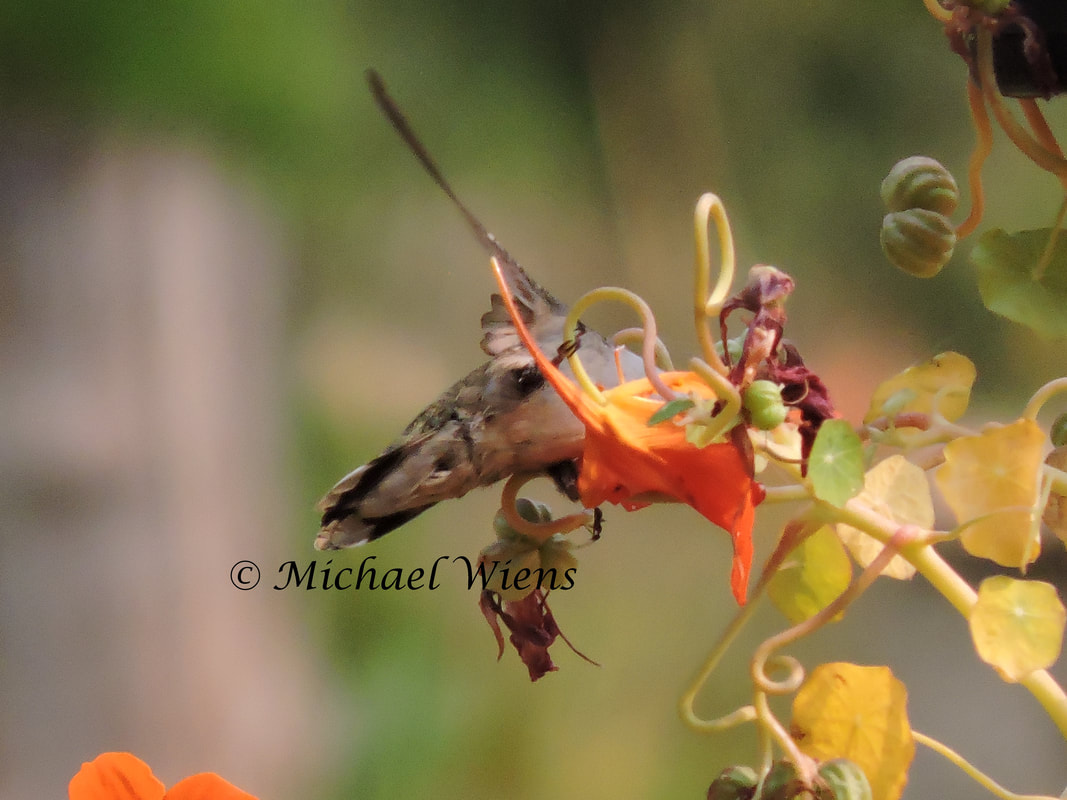 Hummingbirds develop a keen sense of what to fear as they mature. Adult birds simply know there are other food sources around, and not to bother with those that could get them in real trouble. Sometimes the sweetness is just too enticing for the juveniles, and they'll contort their bodies into any position to access the irresistible nectar. Adult birds are always far more cautious about sticking their head into a flower that doesn't allow them a visual in all directions. One or two swift attacks from a rival hummingbird is all it'll take for this youngster to think twice before burying its head so deep into a Nasturtium. Juvenile Ruby-throated hummingbird, N.E. of Edmonton, Alberta, Canada. Aug. 2017. |
Archives
June 2024
Categories
All
|
 RSS Feed
RSS Feed
